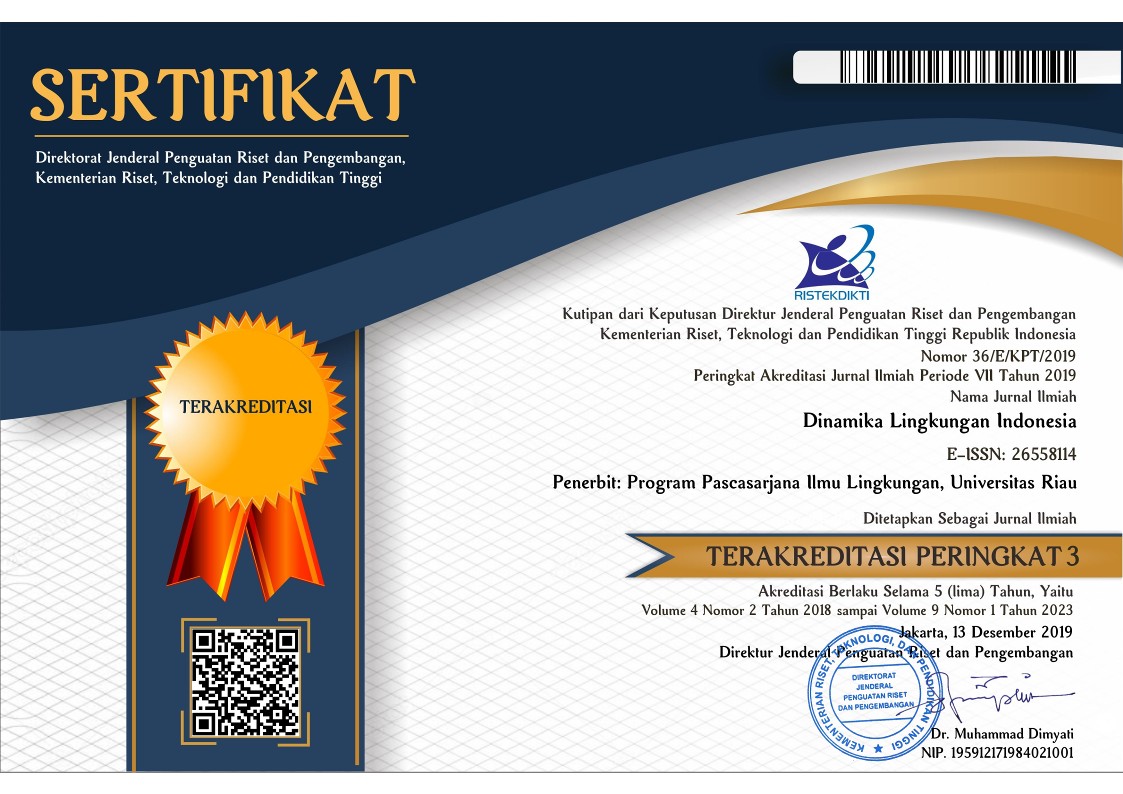Analisa dan Realisasi Sumber Energi Terbarukan Pikohidro Wilayah Posko TNKS
Abstract
TNKS has a very important role in forest management, from sustainability to the utilization of forest products for the surrounding communities that use TNKS land for coffee and cocoa plantations. So that forest sustainability can be maintained and can actually provide sustainable benefits to the community around the forest. The TNKS Center provides coffee grinding machines, which can be used by the coffee plantation community. To drive the coffee grinder, a generator is used, where the fuel is carried directly by the coffee planters. To provide sustainable benefits, river water is used as alternative energy to create a pico-hydro power plant, as a driving force for coffee grinding machines, because the TNKS post is only used by the forest police from morning to evening, so there is no need for lighting at night. Therefore, it is necessary to conduct a site survey to determine the location of the weir, channel, and turbine housing. Likewise, data collection of water discharge and different heights of falling water from the tranquilizer tank to the turbine house. From the results of the survey and calculations obtained a capacity of 6 KW, using a crossflow turbine with a head of 12 meters and a discharge of 100 liters/sec. The Bangun Rejo TNKS Command Post is a camping ground location that supports the construction of PLTPh which needs to be realized immediately. With the existence of this pico-hydro power plant, the community of coffee planters, no longer needs to buy fuel and no longer use generators, but pico-hydro electricity at the TNKS post.
Keywords
Full Text:
PDFReferences
Astro, R. B., Doa, H., & Hendro, H. (2020). Fisika Kontekstual Pembangkit Listrik Tenaga Mikrohidro. ORBITA: Jurnal Kajian, Inovasi, dan Aplikasi Pendidikan Fisika, 6(1): 142-149. https://doi.org/10.31764/orbita.v6i1.1858.
Dinas Pekerja Umumum bidang Pengelolaan Sumber Daya Air. (2020). Provinsi Sumatera Barat.
Ekslopedia Kabupaten Solok Selatan. .https://p2k.stekom.ac.id/ensiklopedia/Kabupaten_Solok_Selatan
Havianto, J. (2012). Renovasi PLTA skala kecil dengan turbin cross flow. https://jonny-havianto.blogspot.com/.
Jatmiko., Asy’ari, H., & Hendarto P. A. (2012) Pemanfaatan pemandian umum untuk pembangkit tenaga listrik mikrohidro (PLTMh) menggunakan kincir tipe overshoot, Universitas Muhammadiyah Surakarta, Jurnal Emitor, 12(1):50-58. ttps://publikasiilmiah.ums.ac.id/bitstream/handle/11617/1890/10_Jatmiko.pdf;sequence=1.
Jawadz, U. R. H., Prasetijo, H., & Purnomo, W. (2019). Studi Potensi Pembangkit Listrik Tenaga Mikro Hidro (PLTMH) Di Aliran Sungai Desa Kejawar Banyumas, Jurnal Dinamika Rekayasa, 15(1):11-24. http://dx.doi.org/10.20884/1.dr.2019.15.1.245.
Rauf, R. (2018). Studi kelayakan energy pada daerah aliran sungai wilayah TNKS. Prosiding SENPLING, ISBN 978-979-792-865-0. https://repository.unri.ac.id/handle/123456789/9493.
Siswadi, S., & Nugroho, A. (2020). Pengembangan model nosel terhadap sudu turbin air, Universitas Wijaya Putra Surabaya, Jurnal Matrik, 21 (1): 73-82. http://dx.doi.org/10.30587/matrik.v21i1.1408.
Sudibyo, H. (2019). Perencanaan Pengembangan turbin pikohidro untuk produk industry Indonesia. Prosiding TAU SNAR-TEK 2019. ISSN 2715-6982. https://jurnal.tau.ac.id/index.php/snartek/article/view/99.
Warsito, S., Syakur, A., & Nugroho, A. A. (2005). Studi awal perencanaan sistem mekanikal dan kelistrikan pembangkit listrik tenaga mini hidro, Universitas Islam Sultan Agung, Seminar Nasional Teknik Ketenagalistrikan.
DOI: http://dx.doi.org/10.31258/dli.10.1.p.12-18
Refbacks
- There are currently no refbacks.

This work is licensed under a Creative Commons Attribution 4.0 International License.





